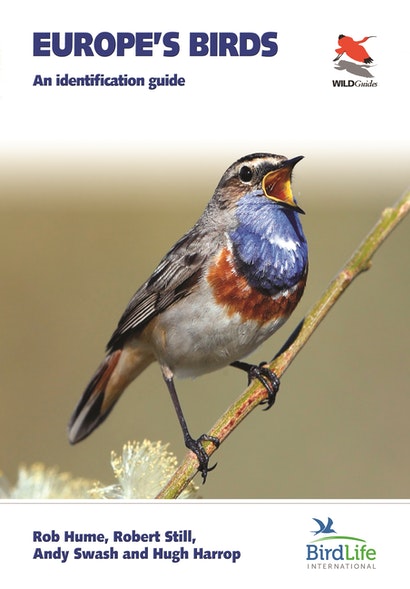Europe's Birds: An Identification Guide
- Europe's Birds: An identification guide by Rob Hume, Robert Still, Andy Swash and Hugh Harrop (Princeton University Press, New Jersey, 2021).
- 640 pages, 4,700 colour photos, 540 colour distribution maps, 49 illustrations.
- ISBN 9780691177656. Flexi, £20.00
- Bookshop from £16.99
Hot on the heels of the acclaimed second edition of Britain's Birds, the authors have followed up with Europe's Birds: An Identification Guide. The book covers some 900 species in 640 pages and includes 4,700 colour photographs, making it "the most comprehensive single-volume photographic guide to Europe's birds ever produced".
Europe's Birds follows the treatment of species and subspecies and scientific classification of BirdLife International rather than the International Ornithologists' Union adopted by the BOURC. This means, for example, Siberian and Stejneger's Stonechats and Tundra and Taiga Bean Geese are treated as subspecies while Siberian Chiffchaff is a full species. Usefully though, identification features are included for all of the above, plus other pairings.
The format has been kept largely the same, allowing for a lot of information to be included in a succinct way. The well-crafted text is short but to the point, with all key features listed alongside arguably the best bird photography in a field guide to date. More than 540 distribution maps are included and give a general sense on a species' range, although due to their small size can’t be used for anything more.
The book begins with the obligatory introductory section, detailing anatomy, ageing, sexing and moult, as well as a 'how to use'. All of which are important aspects to birding at all levels, whether for basic identification or for those who wish to take their birding a bit more in depth. This book recognises that, and each species is complete with photos of any relevant age groups and sex-related plumage. The explanation of moult is a welcome inclusion, with terms kept simple for the reader's benefit.
Cutting-edge comparisons between tricky species groups are scattered throughout; see the table on plain Acrocephalus warblers on page 418 and comparison of juvenile dark-legged 'peeps' on page 566, for examples. Flight comparisons are provided where necessary and include a comprehensive look at adult and juvenile skuas on pages 148-149. Introduced and escaped birds are treated with some care, plus the common pairings of hybrid ducks. A brief note on cross-breeding and escaped falcons can be found on page 319 – a nice addition and a subject perhaps overlooked in other guides. This level of thought is how a book earns the title of a comprehensive guide.
Despite the expert analysis, the book remains very much open to all abilities. With so many photos it would have been easy to create busy pages, yet they've been placed in a way that isn't daunting. The layout is clean and accessible.
A lot of thought has gone into the photographs and this extra effort has been worthwhile – the book is a work of art. The birding world is a constantly changing landscape, with new developments in description, identification and classification. This book respects that and quotes the modern approach of necessity for DNA in some cases. Printed books can't keep up with this ever-evolving field to the finer detail, but they should serve as a good resource for the everyday birder – which is what has been accomplished here. This guide has all the promise of being a great asset to European birders and is highly recommended.



